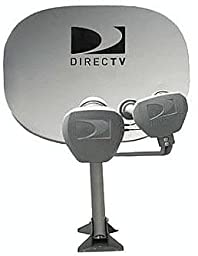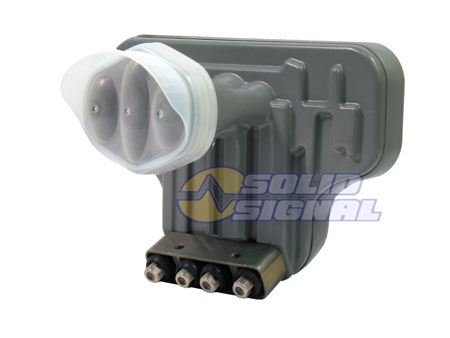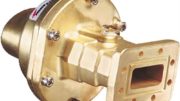There are some folks out there who think that satellite dishes are ugly. I’m not one of them. I think they’re a rather elegantly engineered solution to a problem. But hey, all opinions are welcome here at The Solid Signal Blog. When I get a question like the one above, it’s either because someone wants to add function to a dish, or because they’re worried that dishes will get even uglier. So, it’s worth having a discussion about this subject.
Starting from step 1
Let’s start with the basics. We call the front part of the dish the “LNB” and that’s mostly right. We ought to really call it the “LNB assembly” because that makes a little more sense. But that’s ok.
If you want to say that the whole front part of the dish is “one LNB,” you can have more than one LNB on a dish, and it used to be quite common.

This is DIRECTV’s now-obsolete AT-9 dish. It was used for high-definition service in the mid-2000s and was replaced by the Slimline dish a few years later. As you can see it has two separate LNB assemblies which are connected by tiny wires. This was not a good design, to be honest, and I certainly don’t miss having one of these dishes. It never gave me any problems but I know plenty of people who cursed this dish over the years.
Multiple LNBs, or multiple locations?
But then there are people who use the term “multiple LNBs” to refer to satellite locations. DIRECTV currently has four satellite locations for US programming, at 99, 101, 103, and 119 degrees west longitude. Some dishes can only pull in programs from the first three, and are commonly called “3 LNB dishes,” while some can pull in programs from all four (and the 110 location which is used for Puerto Rico) and some folks call those “5 LNB dishes.”
Except they are, and they’re not.
Here’s where the real confusion begins.
An LNB is a circuit that does two things. It is a Low Noise amplifier, and a Block downconverter (see the L,N,B there?) which means it amplifies weak signals and moves them to a different frequency range. Satellite frequencies don’t travel well over wires, so this is necessary.
Unless you disassemble a dish, you can’t be 100% sure how many actual LNB circuits there are. At one point you needed a separate one for each combination of frequency and polarity, meaning that a dish looking at five locations could need ten LNB circuits. On the other hand, the new 4K dish could potentially have ten circuits as well, even though it looks at only two locations, because some of those locations have two different sets of frequencies.
However, it’s not really likely that there are ten separate chips in this 4K dish, more likely you have chips that can do a lot of the work for more than one frequency/polarity combo.

So when you look at this assembly, do you see one LNB, three LNBs, or ten LNBs? Honestly, all of those answers are right, in one way or another.
As I said, most of the time when people say “LNB” they mean the whole front part, and all current dishes have only one.
Get what you need from Solid Signal
When you shop at Solid Signal, you get the exact same parts that installers and technicians use. You’ll feel comfortable knowing that your DIRECTV system is working as it was intended. We specialize in helping you build the satellite system of your dreams, and we’re here to help you along the way! Call 888-233-7563 for support before, during, and after the sale.





